3-Amino-1,2,3,4-tetrahydrocarbazol
- CAS NO.:61894-99-3
- Empirical Formula: C12H14N2
- Molecular Weight: 186.25
- MDL number: MFCD02181027
- EINECS: 200-528-9
- SAFETY DATA SHEET (SDS)
- Update Date: 2024-02-07 15:08:32
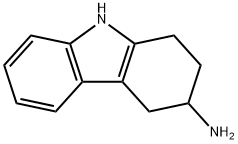
What is 3-Amino-1,2,3,4-tetrahydrocarbazol?
Synthesis Reference(s)
Journal of Heterocyclic Chemistry, 22, p. 191, 1985 DOI: 10.1002/jhet.5570220146
Synthesis
3-Amino-1,2,3,4-tetrahydrocarbazol is prepared by the reaction of 1,4-dioxaspiro[4.5]decan-8-amine and phenylhydrazine. The specific synthesis steps are as follows:
General procedure: Aqueous sulfuric acid solution (10 % w/v, 30 mL) was taken in a round bottom flask, added (1,4-dioxa-spiro[4.5]dec-8-yl)dimethylamine (12a, 1.5 g, 8.1 mmol) followed by phenylhydrazine (1.52 g, 14.08 mmol) at room temperature. The reaction mass was heated to reflux temperature (95-100 °C) and maintained reflux for 2-3 h. The progress of the reaction was monitored by TLC. After completion of reaction, the reaction mass was cooled to 10-15 °C. Then the mass was basified with aqueous sodium hydroxide solution (20 % w/v) and the aqueous layer was extracted with ethyl acetate. Organic layer was washed with brine solution, dried over anhydrous sodium sulfate and organic volatiles were removed by distillation under vacuum. The crude compound was purified by flash chromatography (ethyl acetate: triethylamine 9:0.2) to obtain 0.8 g of 3-Amino-1,2,3,4-tetrahydrocarbazol (13a), the yield being 50 %.
Properties of 3-Amino-1,2,3,4-tetrahydrocarbazol
| Melting point: | 170-172 °C(Solv: ethanol (64-17-5)) |
| Boiling point: | 362.5±42.0 °C(Predicted) |
| Density | 1.191±0.06 g/cm3(Predicted) |
| storage temp. | under inert gas (nitrogen or Argon) at 2–8 °C |
| pka | 17.54±0.40(Predicted) |
Safety information for 3-Amino-1,2,3,4-tetrahydrocarbazol
| Signal word | Warning |
| Pictogram(s) |
 Exclamation Mark Irritant GHS07 |
| GHS Hazard Statements |
H302:Acute toxicity,oral H315:Skin corrosion/irritation H319:Serious eye damage/eye irritation H332:Acute toxicity,inhalation H335:Specific target organ toxicity, single exposure;Respiratory tract irritation |
| Precautionary Statement Codes |
P261:Avoid breathing dust/fume/gas/mist/vapours/spray. P280:Wear protective gloves/protective clothing/eye protection/face protection. P305+P351+P338:IF IN EYES: Rinse cautiously with water for several minutes. Remove contact lenses, if present and easy to do. Continuerinsing. |
Computed Descriptors for 3-Amino-1,2,3,4-tetrahydrocarbazol
New Products
Tert-butyl bis(2-chloroethyl)carbamate (S)-3-Aminobutanenitrile hydrochloride N-Boc-D-alaninol N-BOC-D/L-ALANINOL 3-Morpholino-1-(4-nitrophenyl)-5,6-dihydropyridin- 2(1H)-one Furan-2,5-Dicarboxylic Acid Tropic acid N-octanoyl benzotriazole 1,1’-CARBONYLDIIMIDAZOLE R-2-BENZYLOXY PROPIONIC ACID 4-HYDROXY BENZYL ALCOHOL 1,1’-CARBONYLDI (1,2-4 TRIAZOLE) S-2-CHLORO PROPIONIC ACID (2-Hydroxyphenyl)acetonitrile 4-Bromopyrazole 5-BROMO-2CYANO PYRIDINE 5-broMo-2-chloro-N-cyclopentylpyriMidin-4-aMine 2-(Cyanocyclohexyl)acetic acid 4-methoxy-3,5-dinitropyridine 2-aminopropyl benzoate hydrochloride 1-(4-(aminomethyl)benzyl)urea hydrochloride diethyl 2-(2-((tertbutoxycarbonyl)amino) ethyl)malonate tert-butyl 4- (ureidomethyl)benzylcarbamate Ethyl-2-chloro((4-methoxyphenyl)hydrazono)acetateRelated products of tetrahydrofuran
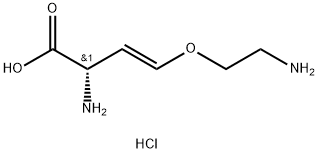
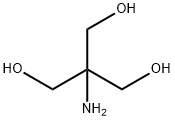



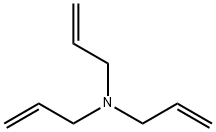
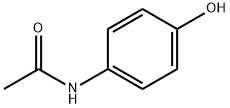
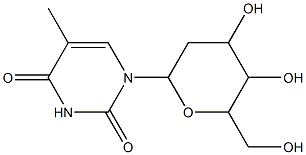
You may like
-
 873-83-6 6-Aminouracil (or) 4-Amino-2,6- dihydroxypyrimidine, (or) 6-Amino2,4-pyrimidinediol 99%View Details
873-83-6 6-Aminouracil (or) 4-Amino-2,6- dihydroxypyrimidine, (or) 6-Amino2,4-pyrimidinediol 99%View Details
873-83-6 -
 55441-95-7 99%View Details
55441-95-7 99%View Details
55441-95-7 -
 N-Vinylformamide 99%View Details
N-Vinylformamide 99%View Details
13162-05-5 -
 Chloro Uracil 1820-81-1 99%View Details
Chloro Uracil 1820-81-1 99%View Details
1820-81-1 -
 207557-35-5 99%View Details
207557-35-5 99%View Details
207557-35-5 -
 2-ethyl-6-methyl-3-hydroxypyridine succinate 99%View Details
2-ethyl-6-methyl-3-hydroxypyridine succinate 99%View Details
127464-43-1 -
 2-ETHYLPYRIDINE 100-71-0 99%View Details
2-ETHYLPYRIDINE 100-71-0 99%View Details
100-71-0 -
 181228-33-1 (S)-Methyl 3-amino-2-((tert-butoxycarbonyl)amino)propanote Hydrochloride (DAP-OMe. HCl) 99%View Details
181228-33-1 (S)-Methyl 3-amino-2-((tert-butoxycarbonyl)amino)propanote Hydrochloride (DAP-OMe. HCl) 99%View Details
181228-33-1